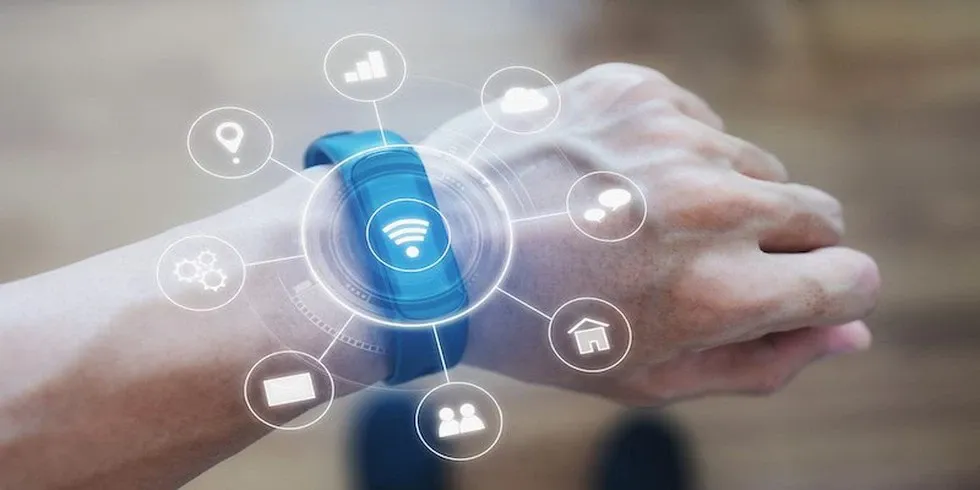Sensors are those essential elements present in wearable devices that enhance the quality and make it more useful. From fitness trackers to smartwatches, sensors collect vital data, such as heart rate, movement, and temperature, giving users real-time insights into their health and activity. They enables the wearable technology to respond to the body’s needs, track physical performance, and even detect potential health issues. By constantly monitoring and analyzing data, sensors help wearables provide personalized feedback and enhance everyday convenience. This article explores how various types of sensors are transforming wearable tech, making it an essential tool for health, fitness, and a more connected lifestyle.
Table of Contents
Understanding Sensor Technology
Sensor technology involves devices that detect changes in the environment, such as temperature, motion, light, or pressure, and convert this data into signals that can be measured and analyzed. Sensors are the backbone of many modern technologies, enabling everything from smart home devices and medical wearables to autonomous vehicles and industrial automation.
Advancements in sensor technology are crucial because they improve the accuracy, efficiency, and functionality of these devices. As sensors become more advanced, they allow for greater precision, real-time monitoring, and enhanced capabilities, ultimately enabling smarter technologies. For example, in healthcare, better sensors mean improved diagnostics and personalized health tracking, while in industries, they lead to safer automation and more efficient processes. The advancement in sensor technology drives innovation across sectors, making devices smarter, promoting connectivity, and helping address challenges in healthcare, transportation, energy management, and more—ultimately improving quality of life and productivity.
What is Wearable Technology?
Wearable technology refers to electronic devices that are worn on the body, like smartwatches, fitness trackers, and health monitoring gadgets. These devices often have sensors that collect data, such as heart rate, steps taken, and sleep patterns, to provide insights into health, fitness, and daily activities. Wearables connect to smartphones or computers to track progress, send notifications, and even make calls. They’re designed to make life more convenient, help manage wellness, and keep users connected on the go, combining tech and comfort seamlessly into everyday items like watches, clothing, or eyewear.
Applications of wearable technology
Wearable technology has diverse applications that enhance convenience, health monitoring, and connectivity. Here are some key applications:
- Health Monitoring: Devices like smartwatches and fitness trackers measure heart rate, blood pressure, blood oxygen levels, and even detect irregularities for early health intervention.
- Fitness Tracking: Trackers monitor physical activity, steps, calories burned, and sleep quality, providing users with insights to maintain or improve fitness.
- Medical Assistance: Wearables help patients manage chronic conditions, such as continuous glucose monitors (CGMs) for diabetes or smart ECG monitors.
- Safety: Wearables can provide fall detection for elderly users or send alerts in emergencies to designated contacts.
- Augmented Reality: Smart glasses like Google Glass provide real-time information for navigation, training, and remote assistance.
- Workplace Efficiency: Wearables like smart headsets assist workers in industrial environments with hands-free communication and augmented task guidance.
- Entertainment and Lifestyle: Wearable devices enhance gaming experiences and provide seamless access to music and notifications.
These applications make wearables integral to health, convenience, safety, and productivity.
Benefits of Smart Sensor Technology
1. Improved Accuracy and Efficiency
- Precise Data Collection: Smart sensors provide highly accurate data, which helps in decision-making across industries like healthcare, manufacturing, and agriculture.
- Real-Time Monitoring: They enable continuous monitoring of vital signs, machinery, or environmental conditions, allowing immediate response to changes.
2. Enhanced Safety and Security
- Predictive Maintenance: Smart sensors can detect early signs of machine failure, preventing costly breakdowns and improving workplace safety.
- Home Security: In smart homes, sensors detect movement, smoke, or leaks, providing timely alerts for better safety.
3. Energy Efficiency
- Optimized Energy Use: Smart sensors in HVAC systems and lighting can adjust energy usage based on occupancy, reducing waste and cutting costs.
4. Personalized User Experience
- Adaptive Technology: Wearables and smart devices use sensors to personalize user experience, such as optimizing fitness goals based on individual health data.
5. Remote Accessibility
- IoT Integration: Sensors connect devices through the Internet of Things (IoT), enabling users to monitor and control systems remotely, enhancing convenience and efficiency.
Future of Wearable Technology
The future of wearable technology is promising, with advancements making devices smarter, smaller, and more intuitive. We’re moving toward wearables that can provide more comprehensive health insights, like early detection of illnesses, monitoring stress levels, and integrating augmented reality features. Innovations such as flexible sensors, advanced biometrics, and AI-driven analytics will allow wearables to become more seamlessly integrated into our daily lives, offering personalized healthcare and immersive experiences.
A sensor technology course can be highly advantageous for understanding wearable tech. It provides insights into how different sensors work, such as motion, temperature, and biometric sensors, and how they are integrated into wearables. The course also covers the principles of sensor data collection, processing, and communication. By understanding these concepts in depth, learners can gain the skills needed to design, develop, or improve wearable devices, helping push the boundaries of what’s possible in health monitoring and personalized technology.
Conclusion
Sensors are the key elements that make wearable technology smarter and more practical for everyday use. They collect valuable data—such as movement, heart rate, and sleep patterns—that helps individuals understand their health, fitness, and overall lifestyle. By providing real-time monitoring and personalized insights, sensors enhance the functionality of wearable devices, making them indispensable for health tracking and daily convenience. As sensor technology continues to advance, wearables will become even more precise and useful, helping users take control of their health and connect more intuitively with their environment. Sensors truly bring the “smart” aspect to wearable tech.

